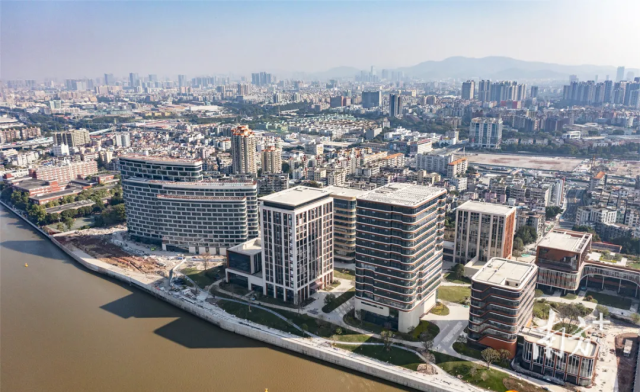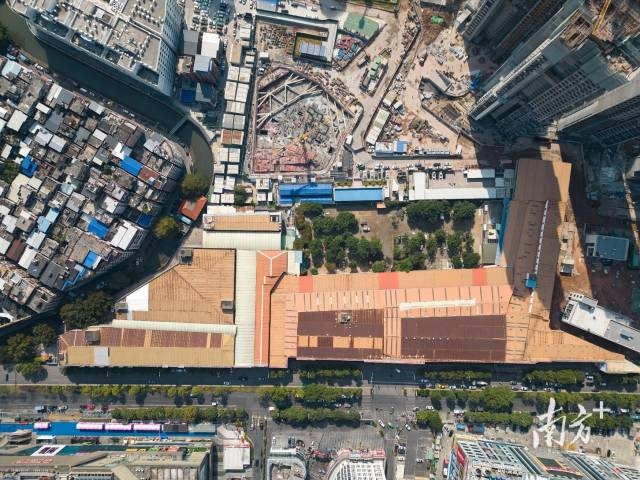Urban renewal is an inevitable requirement for the transformation of urban development and an important measure to promote high-quality economic development. For Guangdong, the largest economy in China with a real-time population of around 150 million and a GDP exceeding RMB 14 trillion, urban renewal holds significant importance.
On February 25, a provincial urban renewal mobilization and deployment meeting, along with a field observation session on urban village revitalization, was held in Guangzhou. Reporters learned from the meeting that, according to preliminary investigations, the province expects to implement over 3,000 urban renewal projects this year, with investments exceeding RMB 400 billion. Among them, 1,289 old residential areas are scheduled for renovation with investments exceeding RMB 4 billion; no fewer than 150 new-mode urban village revitalization projects are scheduled to be initiated, with investments aiming to surpass RMB 120 billion; and 141 historic and cultural preservation and inheritance projects are scheduled with investments of RMB 8.735 billion.

(Photo: Nanfang Plus)
Urban renewal encompasses eight aspects, including the reuse of existing buildings, the renovation of old urban residential areas and urban villages, among others. What is the current overall progress of urban renewal across the province? And what new models and exploratory efforts have been implemented in various regions?

(Photo: Nanfang Plus)
Regarding the new round of urban village revitalization, how will Guangzhou proceed? At the meeting, Hu Hao, Vice Mayor of Guangzhou, said that Guangzhou is comprehensively utilizing three methods: demolition and reconstruction, remediation and upgrading, and a combination of both, to promote the commencement of urban village revitalization in multiple key areas such as the New Central Axis (Haizhu District), Guangzhou Railway Station, and Wushan-encircled innovation source area, based on local conditions. Guangzhou is focusing on an annual investment target of over RMB 100 billion for urban village revitalization, and has already advanced the construction of over 120 projects, with 59 new-model projects included in the national urban village revitalization plan.

On December 27, 2024, the renovation project of Dongfeng Village in Haizhu District of Guangzhou's new central axis officially commenced (Photo: Su Yunhua/Nanfang Plus)
Hu noted that another highlight of Guangzhou's urban village revitalization is the emphasis on the coordinated development of industry and urban areas. It "retains" the industrial foundation by guiding a group of traditional industries with growth potential to be preserved in situ; it "converts" inefficient land use projects, for instance, by setting up integrated industrial land in the reconstructed properties of Kanglu Area, a nationwide first in urban village revitalization; it "attracts" and nurtures high-quality industrial projects to assist the industrial transformation and upgrade of urban villages.

On December 31, 2024, a site meeting was held for the full clearance of leases and handover of the first-phase renovation plot in Kanglu Area. (Photo: Su Yunhua/Nanfang Plus)
Foshan's urban renewal started earlier. At the meeting, Qiao Yu, Vice Mayor of Foshan, pointed out that Foshan has issued a series of updated policies and measures for urban village revitalization, the preservation and revitalization of historic and cultural resources, and more.
"Shifting from traditional short-term project development to long-term sustainable operation modes is a highlight of Foshan's urban renewal," said Qiao. Foshan is exploring a new model to introduce social capital and professional operating teams to participate, revitalizing old neighborhoods such as Renwei Subdistrict and Luohangxu Subdistrict, upgrading old factories such as Meitaowan and Dehong Wenhui Park, and effectively revitalizing idle resources.
Dongguan emphasizes renewal based on urban health checks. Since 2020, Dongguan has conducted urban health checks for five consecutive years, basically establishing a health check mechanism of "identifying problems—rectifying problems—consolidating and enhancing," and compiling urban renewal plans based on the health check results to promote urban renewal.
Ye Baohua, Vice Mayor of Dongguan, introduced that under this model, Dongguan has continuously promoted the renewal and renovation of underground pipe networks, with over 1,000 kilometers of municipal public water supply pipe networks newly built or renovated, and over 30 kilometers of gas pipelines updated and renovated last year. The renovation of old areas emphasizes cultural inheritance. Projects such as "Memories of Dongguan" and the Shilong Zhongshan Road Historic and Cultural District have been revitalized and utilized. Phase I of the first development area of "Memories of Dongguan" has even become a new cultural landmark of the city.
Editor | Yu Yuanyuan (intern), Wang Lihan (intern), Zhong Haiqiong, Liu Lingzhi, James, Shen He
















